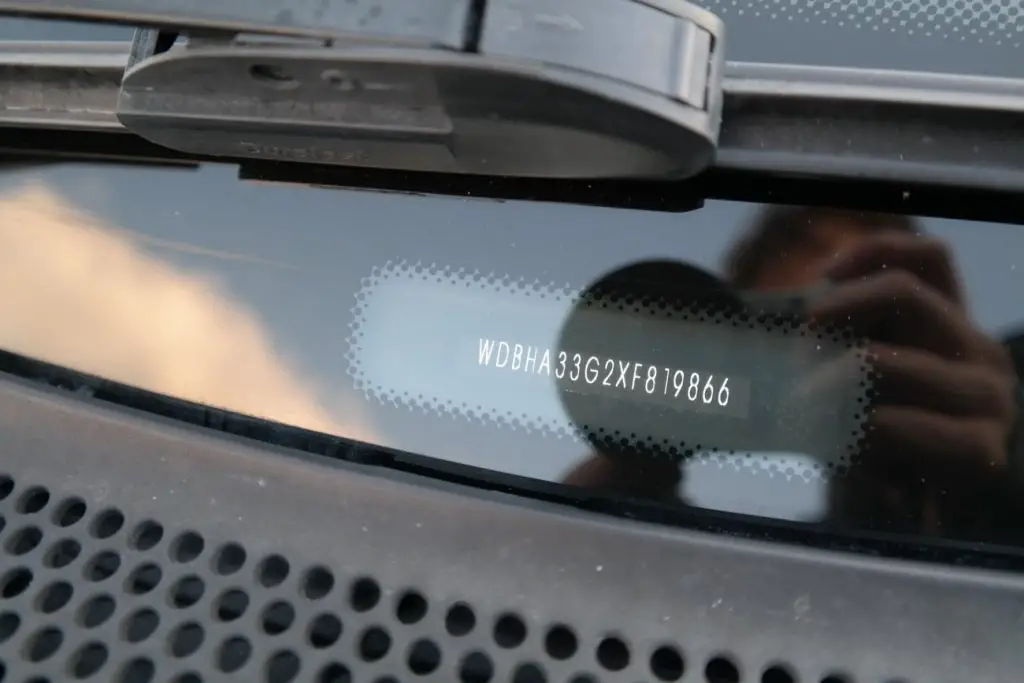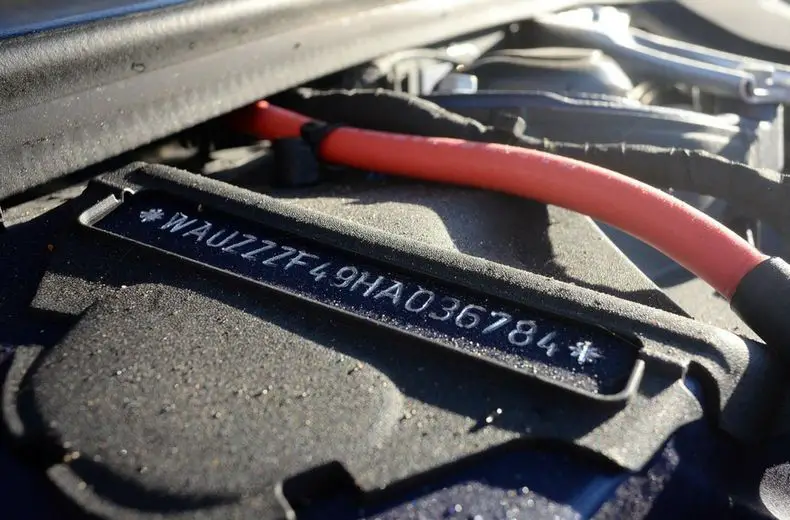“What kind of car do I have with VIN number? By decoding the VIN number, you can uncover important details about your car, including its make, model, engine type, and year of manufacture. The 17-character VIN is a unique identifier that provides all the information you need to know about your vehicle.”
Have you ever found yourself wondering, “What kind of car do I have with the VIN number?” The Vehicle Identification Number (VIN) serves as a unique identifier for every car, truck, or motorcycle on the road today. This 17-character code is more than just a number—it’s a fingerprint that reveals essential details about the car, such as the make, model, engine type, year of manufacture, and even its place of origin.
Whether you are buying a used car, verifying its specifications, or trying to track its history, knowledge about how to use the VIN is an incredibly valuable tool.
In this article, we’ll explain what the VIN number is, how to decode it, where to find it, and how to use this information to gain insight into the car’s details.

Contents
What is a VIN Number?
The Vehicle Identification Number (VIN) is a unique 17-character code assigned to each motor vehicle. It is used by manufacturers, governments, and the automotive industry for identification and tracking purposes. The VIN serves as a fingerprint for the car, providing detailed information about the vehicle’s specifications, manufacturing history, and more. This number is crucial for various purposes, such as registration, insurance, and ensuring the vehicle’s legality.
The VIN number can be found in several places on the vehicle, and it is typically used by law enforcement, insurance companies, and auto manufacturers to track the car’s history, verify ownership, and assist with repairs. In short, your VIN is a vital part of your vehicle’s identity.

What Kind of Car Can I Identify with My VIN Number?
A VIN number may look like a random string of numbers and letters, but it is carefully structured to provide a great deal of information. It consists of 17 characters, each of which holds a specific meaning about the car. Here’s a breakdown of what each section of the VIN tells you:
1. World Manufacturer Identifier (WMI) – Characters 1 to 3
The first three characters of the VIN indicate the manufacturer’s information, including the country of origin and the specific manufacturer.
- First Character: This character identifies the country where the vehicle was manufactured. For instance, “1” or “4” represents the United States, while “J” represents Japan.
- Second Character: This represents the manufacturer or brand. For example, “T” for Toyota, “H” for Honda, and “B” for BMW.
- Third Character: This character denotes the vehicle type or division, helping to specify the kind of car, such as a sports car or SUV.
2. Vehicle Descriptor Section (VDS) – Characters 4 to 9
This part of the VIN is used to describe the vehicle’s features. These characters provide information such as body style, engine type, and model.
- 4th Character: The vehicle’s model, e.g., a sedan, convertible, or hatchback.
- 5th Character: The body style or configuration, such as two-door, four-door, or truck.
- 6th Character: Identifies the engine type and its configuration.
- 7th to 9th Characters: Provide additional vehicle details, such as trim level, safety features, or optional equipment.
- 9th Character: This is the check digit that validates the VIN and ensures that it hasn’t been tampered with.
3. Vehicle Identifier Section (VIS) – Characters 10 to 17
The last part of the VIN contains detailed information about the vehicle’s year, place of manufacture, and production number.
- 10th Character: Represents the model year of the vehicle. For example, “A” stands for 2010, “B” for 2011, and so on.
- 11th Character: Indicates the assembly plant where the car was built.
- 12th to 17th Characters: These characters are specific to your car and represent the vehicle’s unique serial number, which is used to track the car’s history and differentiate it from others.
How to Decode Your Car’s VIN Number
To decode a VIN number, follow these simple steps:
- Locate Your VIN: First, find the VIN on your vehicle. It is typically located on the driver’s side dashboard, near the windshield, or on the door frame of the driver’s side.
- Understand the Sections: Break down the VIN into its three main sections: the WMI, the VDS, and the VIS. Use the breakdown provided above to understand what each part of the VIN tells you about your car.
- Use Online VIN Decoding Tools: There are many websites and services that offer free VIN decoding. You can visit websites such as the NHTSA VIN Decoder to enter your VIN and retrieve detailed information about your vehicle.
- Cross-Check With Manufacturer Websites: Some manufacturers have their own VIN lookup tools that offer specific details about your car, including the original equipment installed when the car was built.
Where Can I Find the VIN Number on My Car?
The VIN is located in several places on your vehicle. The most common locations are:
- On the Dashboard: Look through the windshield on the driver’s side, at the bottom corner of the dashboard.
- On the Driver’s Side Door Frame: Open the door, and check the door frame near the latch or doorjamb.
- In the Engine Bay: Some vehicles have the VIN stamped or etched into the frame or engine compartment.
- On the Car’s Title and Registration: Your car’s VIN is also printed on the title and registration documents.
Once you have located the VIN, you can use it for a variety of purposes, from identifying the car’s specifications to checking its history and verifying its legitimacy.
How to Use the VIN Number to Learn More About Your Car
Using your car’s VIN number can provide you with detailed information about its history, specifications, and more. In this section, we’ll explore how to leverage the VIN number to learn important details about your vehicle.
1. Check Your Car’s History
You can check Car History by VIN. This is especially important when buying a used car. By running a VIN check through services like Carfax or AutoCheck, you can learn whether the car has been involved in accidents, had any major repairs, or has a clean title.
2. Verify Vehicle Specifications
The VIN also helps verify that the car you are considering buying or selling matches the original specifications, such as the model, engine type, and options installed. This is particularly important when replacing parts or verifying upgrades.
3. Recall Information
Automakers issue recalls when they identify safety issues or defects in vehicles. The VIN allows you to check if your car has been involved in any recalls. You can enter the VIN number on the NHTSA website or the manufacturer’s website to see if there are any open recalls for the vehicle.
Related article
Toyota Recalls by VIN
Hyundai Recalls by VIN Number
Ford Recalls by VIN Number
Why is the VIN Number Important?
The VIN is crucial for various purposes:
- Legal Identification: It serves as the official identifier for your vehicle, helping with registration, insurance, and law enforcement.
- Proof of Ownership: The VIN proves your ownership of the vehicle and is required when selling or buying a car.
- Protection Against Theft: The VIN helps prevent vehicle theft and fraud by tracking the vehicle’s history and ensuring its authenticity.
Frequently Asked Questions
Here are some FAQs about the types of car identifying with VIN number –
1. Can I find out what kind of car I have just by using the VIN number?
Yes, by decoding the VIN, you can determine the make, model, engine type, manufacturing year, and other essential details about your car.
2. Where can I find my VIN number?
The VIN can typically be found on the dashboard near the windshield on the driver’s side, or on the door frame of the driver’s side door.
3. Can a VIN number tell me if my car has been in an accident?
Yes, by running a VIN history report through services like Carfax or AutoCheck, you can check if the car has been involved in any accidents.
4. What does the 10th character in a VIN represent?
The 10th character in a VIN represents the model year of the vehicle, which is helpful for determining the car’s age.
Conclusion
The VIN number is a powerful tool that can tell you almost everything about your car, from its make and model to its manufacturing history and even accident reports. By knowing how to decode the VIN number, you gain access to critical information that can help you verify the details of your car, check for recalls, and even protect yourself when buying or selling a vehicle. Always keep your VIN handy as it is an important part of the car’s identity.